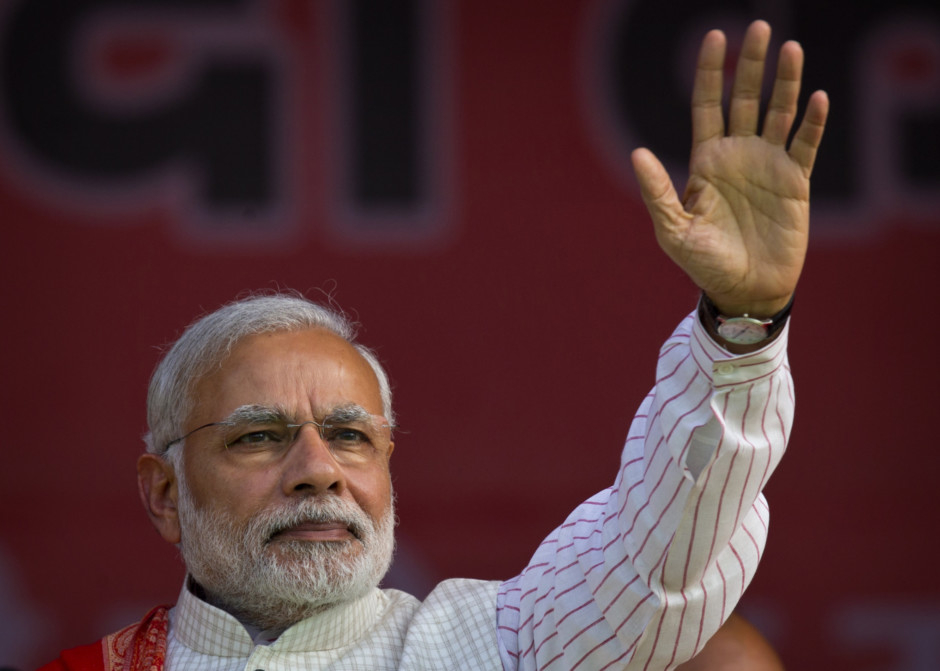_resources1_16a0853c0a4_medium.jpg)
Let me begin with an admission – I got the poll predictions wrong. I was sure it would be a 5-0 in favour of the Congress in all the five Indian states where election results were announced on Tuesday, a day which could derail Prime Minister Narendra Modi’s re-election bid early next year. Out of three states ruled by Modi’s Bharatiya Janata Party, the Congress has snatched Chhattisgarh, is ahead in Rajasthan and is locked in a neck-and-neck fight in Madhya Pradesh. The seesaw battle is expected to end in favour of the Congress given the ideological tilt of potential allies, including Bahujan Samaj Party and Samajwadi Party.
Despite the close contest in Madhya Pradesh, one thing is abundantly clear – Modi’s party is losing ground both in urban and rural areas. More importantly, the results are an indication of his dwindling popularity among all sections of the society. Urban India, the bedrock of support for the BJP in recent years appear to be slipping away in several key battleground states in central and western India. For example, in Chhattisgarh, a state ruled by the BJP for the last 15 years, the indigenous tribes who make up for a third of the population and urban voters voted decisively against the BJP. Also, exit poll data showed that the first time voters this time seem to have ditched the BJP.
What it means for Rahul Gandhi?
On December 16 last year, Rahul Gandhi was formally handed over the certificate of Congress president, a position he took from mother Sonia Gandhi, 72, who ruled the party since 1998. Since then, Rahul has tried to galvanise the Congress, aggressively attacking Modi on several issues, including corruption, farm distress and rising fuel prices, emerging as the Prime Minister’s main rival. Through WhatsApp and public speeches, the BJP responded with a campaign to tarnish Rahul’s image, calling him a Pappu, a slang for a duffer boy. The Prime Minister did not even spare his mother, calling her a “corrupt widow” in an election speech in Rajasthan early this month. On Tuesday, the voters, at least in three big states of Rajasthan, Madhya Pradesh and Chattisgarh have shown their preference – that Pappu’s party is better than the BJP of ‘strong and decisive’ Modi. This is clearly a big day for Rahul and these results will give a huge momentum to the Congress cadre and machinery which was lying defunct for a decade and a half in Madhya Pradesh and Chhattisgarh. It would not be wrong to credit Rahul for his party’s performance as it chose not to project a leader in these states where the Congress president campaigned extensively.
What next for Congress?
Rahul’s first test is to ensure that governments led by able regional leaders are installed in these states, a challenging task given the complex dynamics of Congress where senior leaders are known to place personal ambitions over the larger interest of the party. In Rajasthan, he has to choose between a young Sachin Pilot and veteran Ashok Gehlot, an able administrator. His leadership skills will also be tested in Chattisgarh where no prominent leader stands out to be the chief minister. But the biggest challenge will be in Madhya Pradesh where the Congress’s tally may fall short of a majority and will require the support of Samajwadi Party, Bahujan Samaj Party and independents. Rahul has to act swiftly before the BJP’s Amit Shah reaches out to independents who are likely to go with the highest bidder.
Secondly, the Congress must ponder over its inability to stitch alliances, a mistake that is going to cost dearly in the long run. Talks with the BSP failed ahead of elections in Madhya Pradesh where the Congress is now struggling to get a majority. Rahul must reach out to the BSP leader Mayawati and prove that he is capable of taking along other parties ahead of general elections next year.
Silver lining for the BJP

Tuesday’s results are embarrassing for Modi who has built an image of invincibility in the last five odd years. The poll outcome shows that Modi’s macho image, his party’s aggressive pitch for cultural nationalism are no longer a winning combination. India’s restive voters with diverse needs want much more – tangible deliveries and an economic growth that benefits them, not just big corporates. Youths are unlikely to be swayed by the BJP’s right-wing ideology and they want jobs and education. Similarly, Modi’s hollow promises and tall claims fail to impress the farmers who are seeking competitive prices for their produce. In short, Tuesday’s results show, the BJP’s dependence on ideology alone will not deliver results and Modi has little time left to recalibrate his party’s strategy.
However, there is one silver lining for the BJP – the party’s vote share has remained more or less intact in these states. In Madhya Pradesh, the BJP has gained more votes, 41.4 per cent in comparison to 41.1 per cent by the Congress. Similarly, in Rajasthan, the party got 38.6 per cent against 39.1 per cent of the Congress, a support base that can be counted to make a big push for Modi’s re-election.








